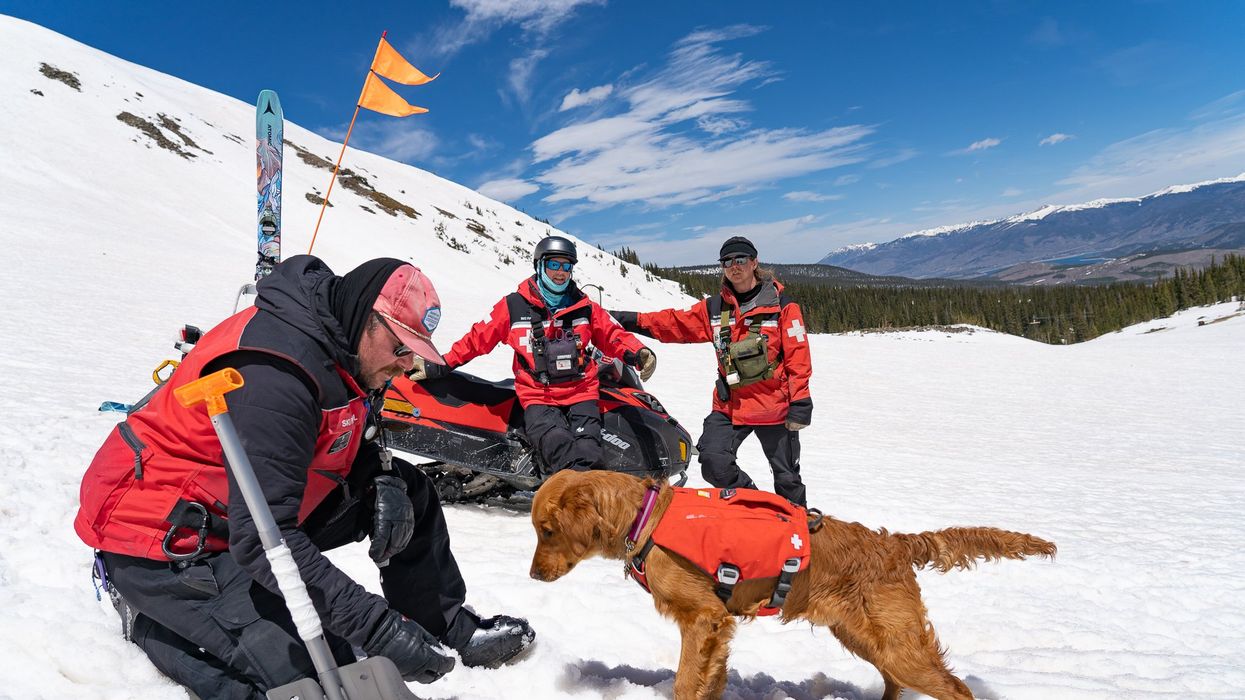Sustainable Urban Farming Has a Rising Hot Star: Bugs
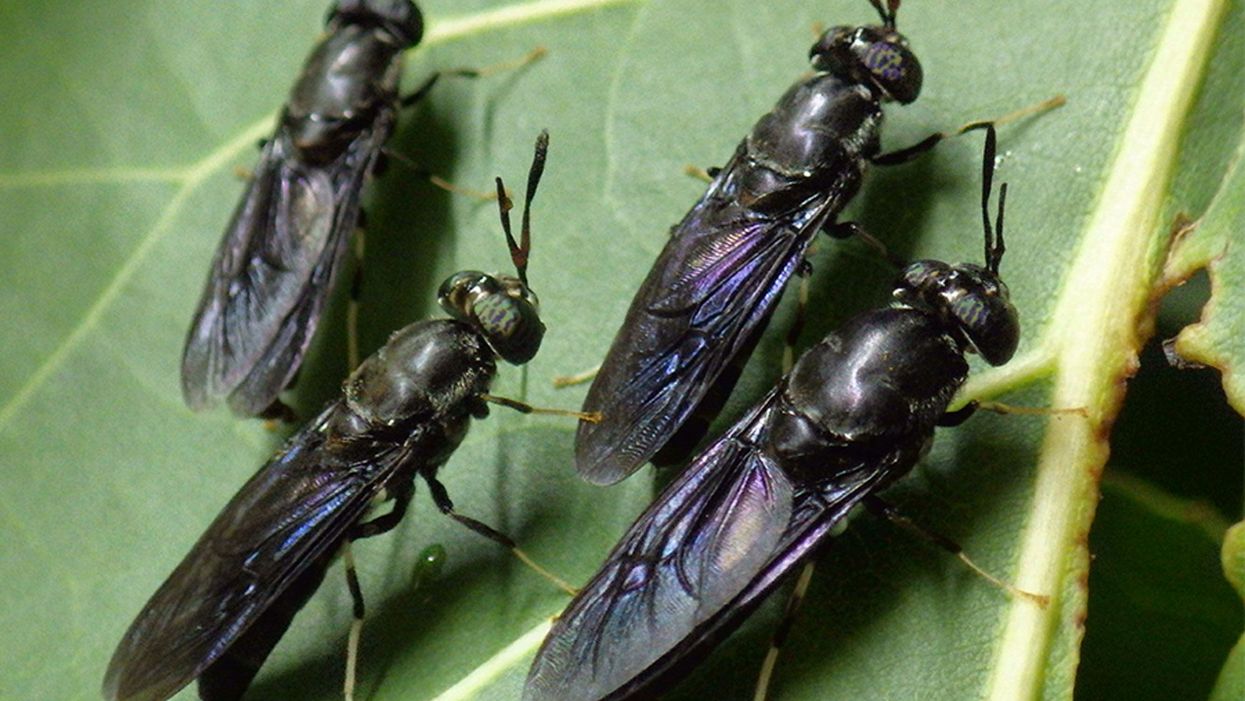
The larvae of adult black soldier flies can turn food waste into sustainable protein with minimal methane gas emissions.
In Sydney, Australia, in the basement of an inner-city high-rise, lives a mass of unexpected inhabitants: millions of maggots. The insects are far from unwelcome. They are there to feast on the food waste generated by the building's human residents.
Goterra, the start-up that installed the maggots in the building in December, belongs to the rapidly expanding insect agriculture industry, which is experiencing a surge of investment worldwide.
The maggots – the larvae of the black soldier fly – are voracious, unfussy eaters. As adult flies, they don't eat, so the young fatten up swiftly on whatever they can get. Goterra's basement colony can munch through 5 metric tons of waste in a day.
"Maggots are nature's cleaners," says Bob Gordon, Head of Growth at Goterra. "They're a great tool to manage waste streams."
Their capacity to consume presents a neat response to the problem of food waste, which contributes up to 8% of global greenhouse gas emissions each year as it rots in landfill.
"The maggots eat the food fairly fresh," Gordon says. "So, there's minimal degradation and you don't get those methane emissions."
Alongside their ability to devour waste, the soldier fly larvae hold further agricultural promise: they yield an incredibly efficient protein. After the maggots have binged for about 12 days, Goterra harvests and processes them into a protein-rich livestock feed. Their excrement, known as frass, is also collected and turned into soil conditioner.
"We are producing protein in a basement," says Gordon. "It's urban farming – really sustainable, urban farming."
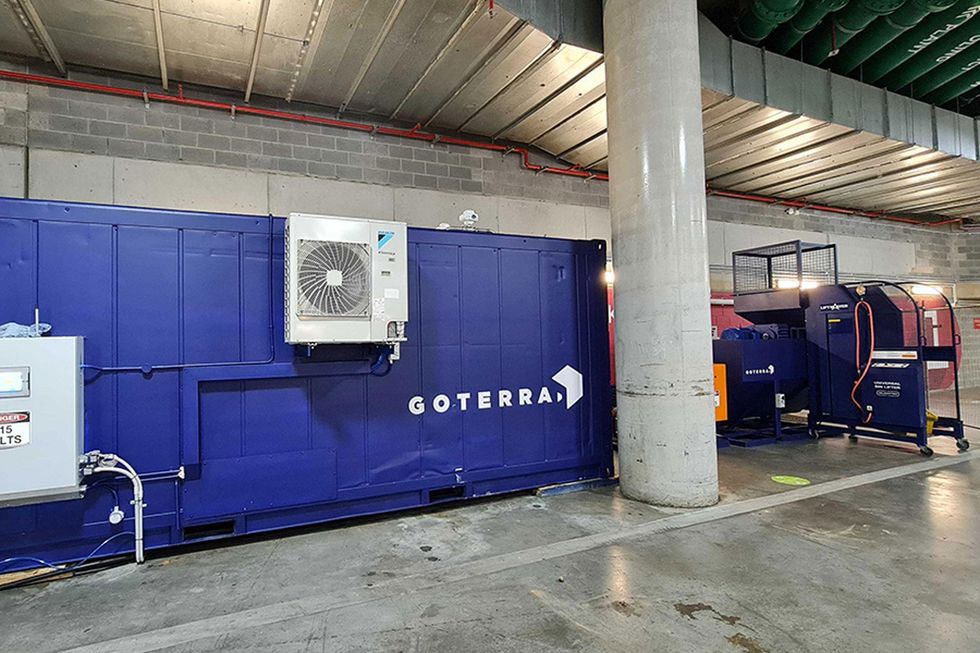
Goterra's module in the basement at Barangaroo, Sydney.
Supplied by Goterra
Goterra's founder Olympia Yarger started producing the insects in "buckets in her backyard" in 2016. Today, Goterra has a large-scale processing plant and has developed proprietary modules – in shipping containers – that use robotics to manage the larvae.
The modules have been installed on site at municipal buildings, hospitals, supermarkets, several McDonald's restaurants, and a range of smaller enterprises in Australia. Users pay a subscription fee and simply pour in the waste; Goterra visits once a fortnight to harvest the bugs.
Insect agriculture is well established outside of the West, and the practice is gaining traction around the world. China has mega-facilities that can process hundreds of tons of waste in a day. In Kenya, a program recently trained 2000 farmers in soldier fly farming to boost their economic security. French biotech company InnovaFeed, in partnership with US agricultural heavyweight ADM, plans to build "the world's largest insect protein facility" in Illinois this year.
"The [maggots] are science fiction on earth. Watching them work is awe-inspiring."
But the concept is still not to everyone's taste.
"This is still a topic that I say is a bit like black liquorice – people tend to either really like it or really don't," says Wendy Lu McGill, Communications Director at the North American Coalition of Insect Agriculture (NACIA).
Formed in 2016, NACIA now has over 100 members – including researchers and commercial producers of black soldier flies, meal worms and crickets.
McGill says there have been a few iterations of insect agriculture in the US – beginning with worms produced for bait after World War II then shifting to food for exotic pets. The current focus – "insects as food and feed" – took root about a decade ago, with the establishment of the first commercial farms for this purpose.
"We're starting to see more expansion in the U.S. and a lot of the larger investments have been for black soldier fly producers," McGill says. "They tend to have larger facilities and the animal feed market they're looking at is potentially quite large."
InnovaFeed's Illinois facility is set to produce 60,000 metric tons of animal feed protein per year.
"They'll be trying to employ many different circular principles," McGill says of the project. "For example, the heat from the feed factory – the excess heat that would normally just be vented – will be used to heat the other side that's raising the black soldier fly."
Although commercial applications have started to flourish recently, scientific knowledge of the black soldier fly's potential has existed for decades.
Dr. Jeffery Tomberlin, an entomologist at Texas A&M University, has been studying the insect for over 20 years, contributing to key technologies used in the industry. He also founded Evo, a black soldier fly company in Texas, which feeds its larvae the waste from a local bakery and distillery.
"They are science fiction on earth," he says of the maggots. "Watching them work is awe-inspiring."
Tomberlin says fly farms can work effectively at different scales, and present possibilities for non-Western countries to shift towards "commodity independence."
"You don't have to have millions of dollars invested to be successful in producing this insect," he says. "[A farm] can be as simple as an open barn along the equator to a 30,000 square-foot indoor facility in the Netherlands."
As the world's population balloons, food insecurity is an increasing concern. By 2050, the UN predicts that to feed our projected population we will need to ramp up food production by at least 60%. Insect agriculture, which uses very little land and water compared to traditional livestock farming, could play a key role.
Insects may become more common human food, but the current commercial focus is animal feed. Aquaculture is a key market, with insects presenting an alternative to fish meal derived from over-exploited stocks. Insect meal is also increasingly popular in pet food, particularly in Europe.
While recent investment has been strong – NACIA says 2020 was the best year yet – reaching a scale that can match existing agricultural industries and providing a competitive price point are still hurdles for insect agriculture.
But COVID-19 has strengthened the argument for new agricultural approaches, such as the decentralized, indoor systems and circular principles employed by insect farms.
"This has given the world a preview – which no one wanted – of [future] supply chain disruptions," says McGill.
As the industry works to meet demand, Tomberlin predicts diversification and product innovation: "I think food science is going to play a big part in that. They can take an insect and create ice cream." (Dried soldier fly larvae "taste kind of like popcorn," if you were wondering.)
Tomberlin says the insects could even become an interplanetary protein source: "I do believe in that. I mean, if we're going to colonize other planets, we need to be sustainable."
But he issues a word of caution about the industry growing too big, too fast: "I think we as an industry need to be very careful of how we harness and apply [our knowledge]. The black soldier fly is considered the crown jewel today, but if it's mismanaged, it can be relegated back to a past."
Goterra's Gordon also warns against rushing into mass production: "If you're just replacing big intensive animal agriculture with big intensive animal agriculture with more efficient animals, then what's the change you're really effecting?"
But he expects the industry will continue its rise though the next decade, and Goterra – fuelled by recent $8 million Series A funding – plans to expand internationally this year.
"Within 10 years' time, I would like to see the vast majority of our unavoidable food waste being used to produce maggots to go into a protein application," Gordon says.
"There's no lack of demand. And there's no lack of food waste."
In this week's Friday Five: The eyes are the windows to the soul - and biological aging?
Plus, what bean genes mean for health and the planet, a breathing practice that could lower levels of tau proteins in the brain, AI beats humans at assessing heart health, and the benefits of "nature prescriptions"
The Friday Five covers five stories in research that you may have missed this week. There are plenty of controversies and troubling ethical issues in science – and we get into many of them in our online magazine – but this news roundup focuses on new scientific theories and progress to give you a therapeutic dose of inspiration headed into the weekend.
Listen on Apple | Listen on Spotify | Listen on Stitcher | Listen on Amazon | Listen on Google
Here are the stories covered this week:
- The eyes are the windows to the soul - and biological aging?
- What bean genes mean for health and the planet
- This breathing practice could lower levels of tau proteins
- AI beats humans at assessing heart health
- Should you get a nature prescription?
Avalanche rescue dogs train to find and dig out people buried in snow slides
Two-and-a-half year-old Huckleberry, a blue merle Australian shepherd, pulls hard at her leash; her yelps can be heard by skiers and boarders high above on the chairlift that carries them over the ski patrol hut to the top of the mountain. Huckleberry is an avalanche rescue dog — or avy dog, for short. She lives and works with her owner and handler, a ski patroller at Breckenridge Ski Resort in Colorado. As she watches the trainer play a game of hide-and-seek with six-month-old Lume, a golden retriever and avy dog-in-training, Huckleberry continues to strain on her leash; she loves the game. Hide-and-seek is one of the key training methods for teaching avy dogs the rescue skills they need to find someone caught in an avalanche — skier, snowmobiler, hiker, climber.
Lume’s owner waves a T-shirt in front of the puppy. While another patroller holds him back, Lume’s owner runs away and hides. About a minute later — after a lot of barking — Lume is released and commanded to “search.” He springs free, running around the hut to find his owner who reacts with a great amount of excitement and fanfare. Lume’s scent training will continue for the rest of the ski season (Breckenridge plans operating through May or as long as weather permits) and through the off-season. “We make this game progressively harder by not allowing the dog watch the victim run away,” explains Dave Leffler, Breckenridge's ski patroller and head of the avy dog program, who has owned, trained and raised many of them. Eventually, the trainers “dig an open hole in the snow to duck out of sight and gradually turn the hole into a cave where the dog has to dig to get the victim,” explains Leffler.
By the time he is three, Lume, like Huckleberry, will be a fully trained avy pup and will join seven other avy dogs on Breckenridge ski patrol team. Some of the team members, both human and canine, are also certified to work with Colorado Rapid Avalanche Deployment, a coordinated response team that works with the Summit County Sheriff’s office for avalanche emergencies outside of the ski slopes’ boundaries.
There have been 19 avalanche deaths in the U.S. this season, according to avalanche.org, which tracks slides; eight in Colorado. During the entirety of last season there were 17. Avalanche season runs from November through June, but avalanches can occur year-round.
High tech and high stakes
Complementing avy dogs’ ability to smell people buried in a slide, avalanche detection, rescue and recovery is becoming increasingly high tech. There are transceivers, signal locators, ground scanners and drones, which are considered “games changers” by many in avalanche rescue and recovery
For a person buried in an avalanche, the chance of survival plummets after 20 minutes, so every moment counts.
A drone can provide thermal imaging of objects caught in a slide; what looks like a rock from far away might be a human with a heat signature. Transceivers, also known as beacons, send a signal from an avalanche victim to a companion. Signal locators, like RECCO reflectors which are often sewn directly into gear, can echo back a radar signal sent by a detector; most ski resorts have RECCO detector units.
Research suggests that Ground Penetrating Radar (GPR), an electromagnetic tool used by geophysicists to pull images from inside the ground, could be used to locate an avalanche victim. A new study from the Department of Energy’s Sandia National Laboratories suggests that a computer program developed to pinpoint the source of a chemical or biological terrorist attack could also be used to find someone submerged in an avalanche. The search algorithm allows for small robots (described as cockroach-sized) to “swarm” a search area. Researchers say that this distributed optimization algorithm can help find avalanche victims four times faster than current search mechanisms. For a person buried in an avalanche, the chance of survival plummets after 20 minutes, so every moment counts.
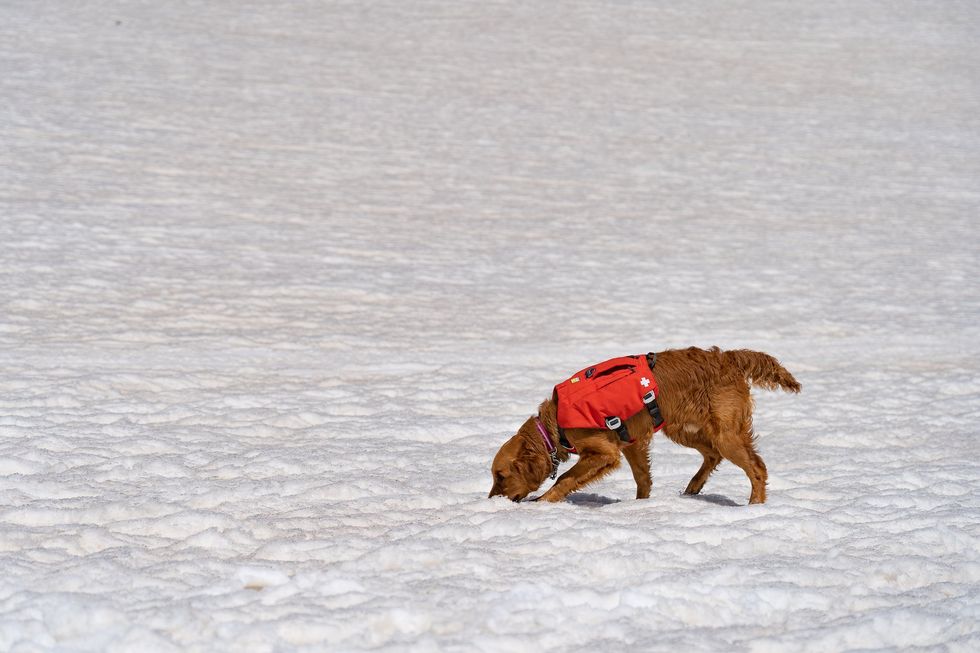
An avy dog in training is picking up scent
Sarah McLear
While rescue gear has been evolving, predicting when a slab will fall remains an emerging science — kind of where weather forecasting science was in the 1980s. Avalanche forecasting still relies on documenting avalanches by going out and looking,” says Ethan Greene, director of the Colorado Avalanche Information Center (CAIC). “So if there's a big snowstorm, and as you might remember, most avalanches happened during snowstorms, we could have 10,000 avalanches that release and we document 50,” says Greene. “Avalanche forecasting is essentially pattern recognition,” he adds--and understanding the layering structure of snow.
However, determining where the hazards lie can be tricky. While a dense layer of snow over a softer, weaker layer may be a recipe for an avalanche, there’s so much variability in snowpack that no one formula can predict the trigger. Further, observing and measuring snow at a single point may not be representative of all nearby slopes. Finally, there’s not enough historical data to help avalanche scientists create better prediction models.
That, however, may be changing.
Last year, an international group of researchers created computer simulations of snow cover using 16 years of meteorological data to forecast avalanche hazards, publishing their research in Cold Regions Science and Technology. They believe their models, which categorize different kinds of avalanches, can support forecasting and determine whether the avalanche is natural (caused by temperature changes, wind, additional snowfall) or artificial (triggered by a human or animal).
With smell receptors ranging from 800 million for an average dog, to 4 billion for scent hounds, canines remain key to finding people caught in slides.
With data from two sites in British Columbia and one in Switzerland, researchers built computer simulations of five different avalanche types. “In terms of real time avalanche forecasting, this has potential to fill in a lot of data gaps, where we don't have field observations of what the snow looks like,” says Simon Horton, a postdoctoral fellow with the Simon Fraser University Centre for Natural Hazards Research and a forecaster with Avalanche Canada, who participated in the study. While complex models that simulate snowpack layers have been around for a few decades, they weren’t easy to apply until recently. “It's been difficult to find out how to apply that to actual decision-making and improving safety,” says Horton. If you can derive avalanche problem types from simulated snowpack properties, he says, you’ll learn “a lot about how you want to manage that risk.”
The five categories include “new snow,” which is unstable and slides down the slope, “wet snow,” when rain or heat makes it liquidly, as well as “wind-drifted snow,” “persistent weak layers” and “old snow.” “That's when there's some type of deeply buried weak layer in the snow that releases without any real change in the weather,” Horton explains. “These ones tend to cause the most accidents.” One step by a person on that structurally weak layer of snow will cause a slide. Horton is hopeful that computer simulations of avalanche types can be used by scientists in different snow climates to help predict hazard levels.
Greene is doubtful. “If you have six slopes that are lined up next to each other, and you're going to try to predict which one avalanches and the exact dimensions and what time, that's going to be really hard to do. And I think it's going to be a long time before we're able to do that,” says Greene.
What both researchers do agree on, though, is that what avalanche prediction really needs is better imagery through satellite detection. “Just being able to count the number of avalanches that are out there will have a huge impact on what we do,” Greene says. “[Satellites] will change what we do, dramatically.” In a 2022 paper, scientists at the University of Aberdeen in England used satellites to study two deadly Himalayan avalanches. The imaging helped them determine that sediment from a 2016 ice avalanche plus subsequent snow avalanches contributed to the 2021 avalanche that caused a flash flood, killing over 200 people. The researchers say that understanding the avalanches characteristics through satellite imagery can inform them how one such event increases the magnitude of another in the same area.
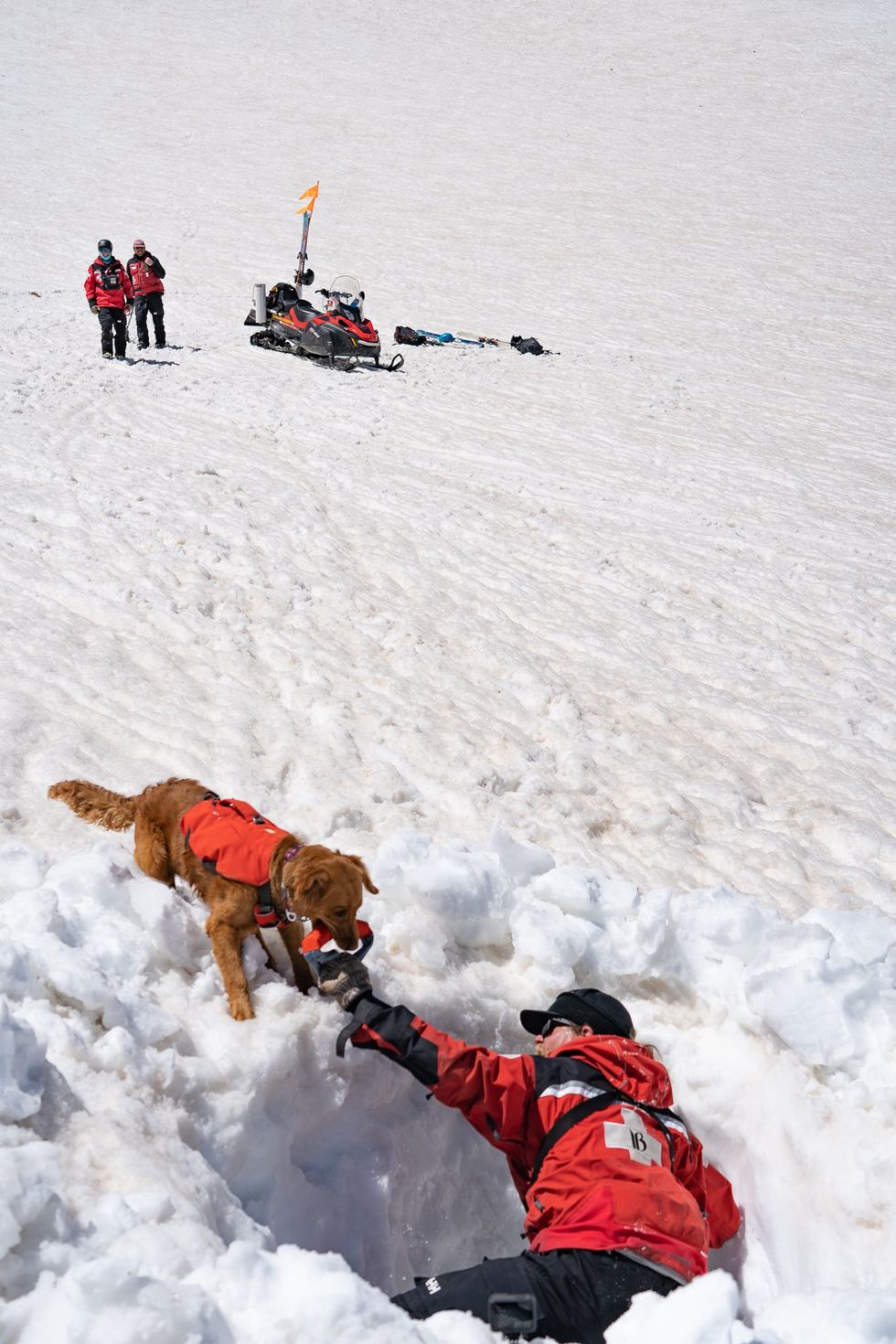
Avy dogs trainers hide in dug-out holes in the snow, teaching the dogs to find buried victims
Sarah McLear
Lifesaving combo: human tech and Mother Nature’s gear
Even as avalanche forecasting evolves, dogs with their built-in rescue mechanisms will remain invaluable. With smell receptors ranging from 800 million for an average dog, to 4 billion for scent hounds, canines remain key to finding people caught in slides. (Humans in comparison, have a meager 12 million.) A new study published in the Journal of Neuroscience revealed that in dogs smell and vision are connected in the brain, which has not been found in other animals. “They can detect the smell of their owner's fingerprints on a glass slide six weeks after they touched it,” says Nicholas Dodman, professor emeritus at Cummings School of Veterinary Medicine at Tufts University. “And they can track from a boat where a box filled with meat was buried in the water, 100 feet below,” says Dodman, who is also co-founder and president of the Center for Canine Behavior Studies.
Another recent study from Queens College in Belfast, United Kingdom, further confirms that dogs can smell when humans are stressed. They can also detect the smell of a person’s breath and the smell of the skin cells of a deceased person.
The emerging avalanche-predicting human-made tech and the incredible nature-made tech of dogs’ olfactory talents is the lifesaving “equipment” that Leffler believes in. Even when human-made technology develops further, it will be most efficient when used together with the millions of dogs’ smell receptors, Leffler believes. “It is a combination of technology and the avalanche dog that will always be effective in finding an avalanche victim.”

